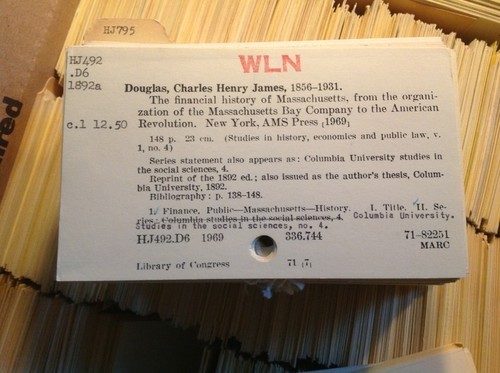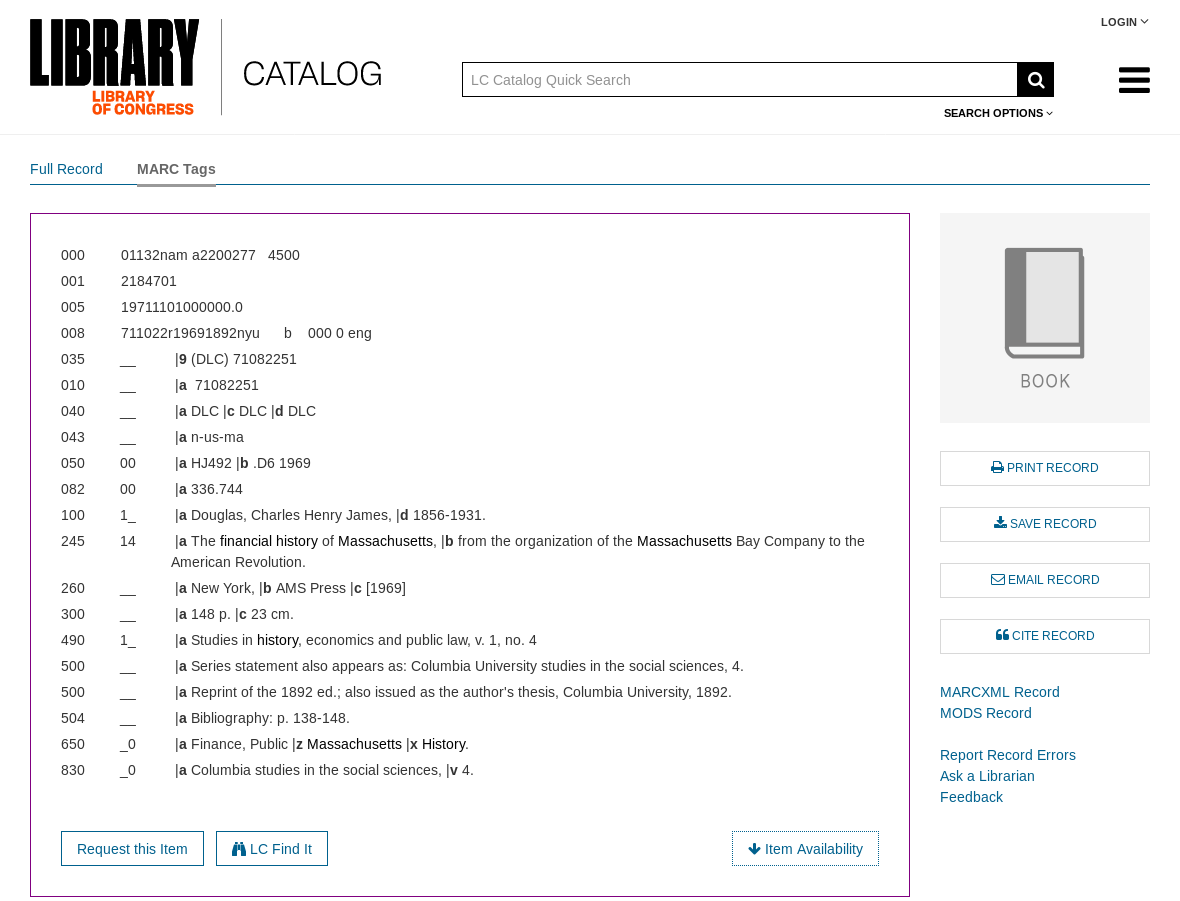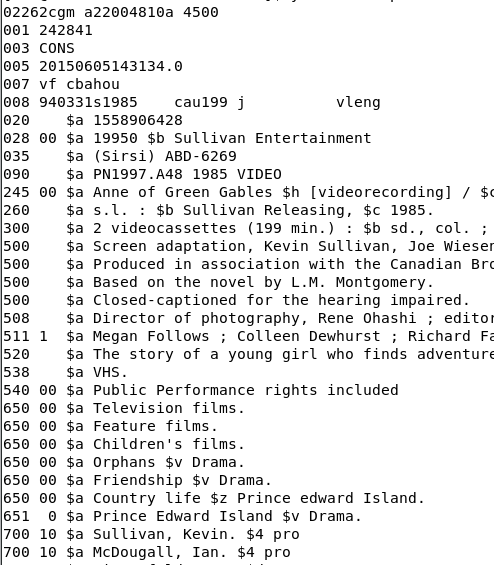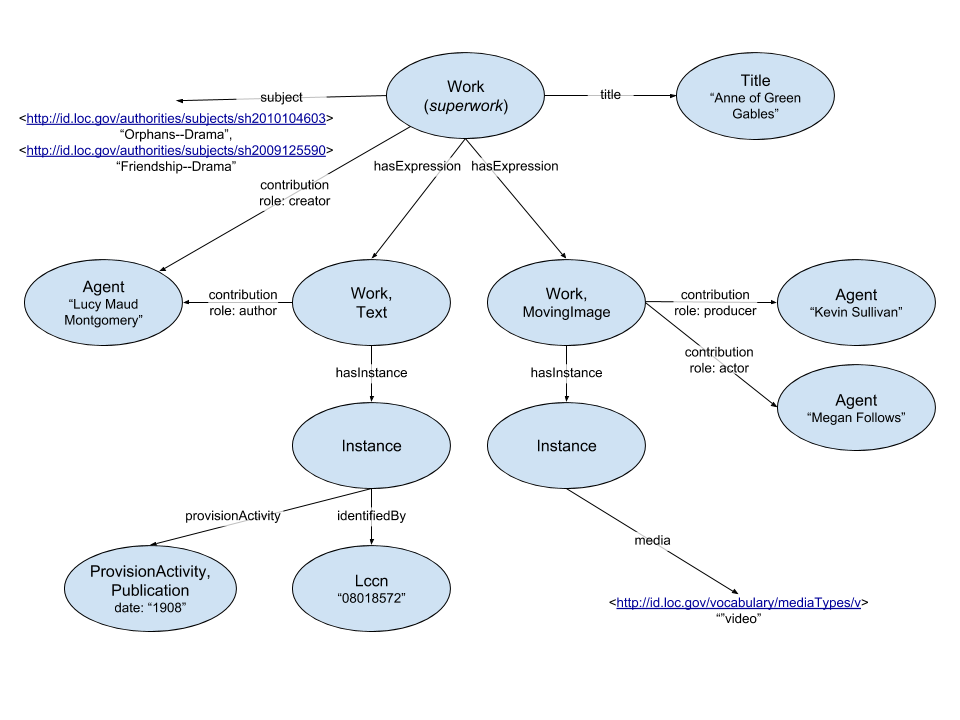Assessing the quality of linked bibliographic data
Dan Scott <https://dscott.ca/#i>
PhD student, McGill University

Photo credit: worthpoint.com

| Bibliographic data | Linked data |
|---|---|
| Printed cards | A web of documents |
| Digital card catalogues | A web of data |
| Records (fields with values) | Entities and relationships |
| Text | Text and media |
| Records are shared, modified, reshared | Anyone can say anything about anything |
| Metadata | Metadata and data |
Linked bibliographic data
- From bibliographic records to linked bibliographic data:
- Dublin Core Metadata Terms (dcterms) - 2003-
- Bibliographic Ontology (bibo) - 2008-2009
- FRBR-Aligned Bibliographic Ontology (fabio) - 2010-
- Bibliographic Framework (BIBFRAME) - 2012-
- Resource Description Access (RDA) - 2014-


Data quality: why?
- Standards are not sufficient, nor standard (Zhu et al, 2016)
- Bibliographic data: history of collaborative efforts and challenges
- Linked data: broad scope, sophisticated models, but limited results
- Linked bibliographic data: early days, wide open
Seminal definition of data quality
data that are fit for use by data consumers Wang & Strong (1996)
- "data consumers" means context is critical
- Context for this work was MIS with defence systems
Data quality dimensions
| Dimension | CS models | LIS models | MIS models | Total |
|---|---|---|---|---|
| Intrinsic structural consistency | 6 | 4 | 4 | 14 |
| Intrinsic accuracy | 4 | 3 | 4 | 11 |
| Intrinsic completeness | 4 | 3 | 4 | 11 |
| Accessibility | 4 | 2 | 2 | 8 |
| Completeness | 5 | 1 | 2 | 8 |
| Relevancy | 4 | 2 | 2 | 8 |
| Reputation | 5 | 1 | 2 | 8 |
| Timeliness | 6 | 0 | 2 | 8 |
| Relational accuracy | 4 | 2 | 1 | 7 |
| Relational structural consistency | 5 | 1 | 1 | 7 |
| Intrinsic concise representation | 5 | 0 | 2 | 7 |
15 studies across CS (n=7), LIS (n=4), and MIS (n=4)
Data quality dimensions
| Dimension | CS models | LIS models | MIS models | Total |
|---|---|---|---|---|
| Intrinsic complexity | 0 | 2 | 2 | 4 |
| Relational semantic consistency | 1 | 3 | 0 | 4 |
| Currency | 1 | 2 | 1 | 4 |
| Volatility | 1 | 2 | 1 | 4 |
15 studies across CS (n=7), LIS (n=4), and MIS (n=4)
Data quality research methods
| Method | CS | LIS | MIS | Grand Total |
|---|---|---|---|---|
| Automated analysis | 9 | 2 | 1 | 12 |
| Benchmark | 3 | 3 | ||
| Case studies | 1 | 1 | 1 | 3 |
| Content analysis | 8 | 8 | ||
| Deductive reasoning | 2 | 2 | 4 | |
| Expert opinion | 2 | 2 | ||
| Survey (quantitative) | 2 | 3 | 5 | |
| Test datasets | 1 | 2 | 3 |
33 studies across CS (n=11), LIS (n=19), and MIS (n=3)
Gaps and opportunities
Generalizability
- Linked data: yes, but specificity is lacking
- Bibliographic literature: no
- Small scale
- Dublin Core
- Context bound
Reproducibility
- External validity threat: history vs. open datasets
- Lack of access to implementations, in-house datasets
Automation: breadth vs. depth
- Billions of records: mostly syntax
- Handfuls of records: rich semantics
Research questions
- How should libraries conceive of quality in the domain of linked bibliographic data?
- How can libraries meaningfully assess the quality of linked bibliographic data?
- How can libraries assess the quality of linked bibliographic data at scale?
References
Appendices
Proposal
- Synthesize a conceptual model for quality assessment of linked bibliographic data
- Compile a gold standard dataset of linked bibliographic data using the BIBFRAME vocabulary (Aalberg et al., 2018; Decourselle, 2016)
- Implement the conceptual model metrics in an automated assessment tool
Significance
- Constructivist grounded theory is a new approach to model development for data quality
- Gold standard dataset will ease the efforts of other researchers, in data quality and other inquiries
- Assessment tool should enable libraries to evaluate and improve their linked bibliographic data early
Methodologies
- Surveys
- Interviews
- Card sorting
- Content analysis
- Log analysis
- Functional requirements heuristics
- Deductive reasoning
- Automated tools
Aggregations
From national union catalogues, cooperative cataloguing efforts, and OAI-PMH harvested records, to open knowledge graphs
Boissonas (1979); Bruce & Hillman (2004); Debattista et al. (2018); El-Sherbini (2010); Färber et al. (2017); Hider & Tan (2008); Moen et al. (1998); Stvilia et al. (2007);
Fitness for use
- Heavy dependence on IFLA LRM (2017) tasks:
- Find
- Identify
- Select
- Obtain
- Explore
Data consumers
- "Data consumers" depend on context
- Linked data broadens possible contexts
- Consumers... but also producers?
